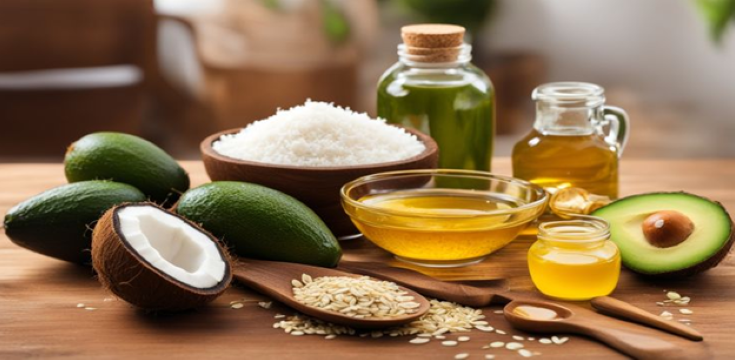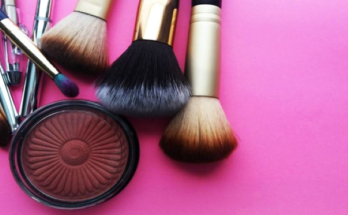The list of culprits that cause dry skin is a long one, from hot showers and scrubbing yourself dry with a towel, to winter weather and aging. The good news is that, unless you’re managing a skin condition, there are several excellent natural home treatments you can try to remedy your dry skin.
Whip Up an Olive Oil Moisturizer to Soothe Dry Skin
If you need extra moisture fast, use extra-virgin olive oil as an alternative to your moisturizer, but only if you’re in a pinch. Olive oil contains vitamin E, antioxidants, squalene, and other properties that repair damaged skin. It may not be a good choice for acne-prone skin because of the risk of clogging your pores.
Before applying olive oil directly to your skin, double-check whether this solution is right for you by consulting a dermatologist. If you decide to try olive oil, a pure, or regular, form that isn’t refined with other oils, and to use it sparingly, such as applying a few drops to a face mask, or massaging the oil into extremely dry areas like your elbows.
DIY a Rich, Creamy Avocado Mask
A homemade mask of avocado is another natural way to soothe dry skin. This face mask is chock-full of antioxidants and probiotics that will promote healthy, glowing skin. Try combining ½ avocado with ¼ cup plain Greek yogurt, which may improve skin texture because of its lactic acid content. Adding a drizzle of manuka honey and 1 teaspoon of turmeric for potential anti-inflammatory benefits and to improve symptoms of inflammatory skin conditions such as eczema, per a separate.
Apply the mixture to clean skin and let it set for 5 to 10 minutes before rinsing off. As for the other half of the avocado, why not eat it? Another study found that combining avocado oil with water and saffron extract can also be a great dry-skin remedy. Researchers of another study found a combination of avocado oil, water, and saffron extract rejuvenated the skin and reduced the appearance of wrinkles, though it’s not clear whether any significant moisturization was noted.
Make a Natural Coconut Oil and Sugar Scrub
To treat dead skin cells that might be giving your skin a dry texture and appearance, you may consider a gentle homemade sugar scrub. Try combining 1 cup of brown or granulated sugar with ½ cup of coconut oil. If you want, you can add an essential oil like lavender, which lends a natural fragrance and may promote relaxation and decrease anxiety. Gently rub the scrub into your skin for up to 30 seconds, then wash it off with lukewarm water. Keep in mind that physical, or mechanical, exfoliation of this type may not be suitable for all skin types.
Create an Easy Oatmeal Soak to Calm Your Skin
A cup of oatmeal in a warm bath can naturally rehydrate dry skin. The oat product itself is soothing, and it helps your skin retain moisture from the bathwater. Or, for a mess-free soak, tie the oats to your faucet in pantyhose and run your bathwater through them. If you have eczema, oatmeal may offer relief from dry, inflamed, or irritated skin associated with both atopic and contact dermatitis.
Exfoliate Your Face With a Homemade Oatmeal Honey Mask
Oatmeal makes a great exfoliator or mask, too. Mix 2 tablespoons of oats with 1 tablespoon of honey and a dash of water. You can use it just to exfoliate and wash it off right away, or leave it on for 15 to 20 minutes as a soothing, hydrating mask. Research shows that honey may have antimicrobial properties that may also help accelerate wound healing.
Apply Coconut Oil Before Bedtime
Coconut oil is another popular home treatment for healthy hair and skin, which has roots in African and Indian cultures. Coconut oil becomes a solid at room temperature, so use it as a moisturizing cream at bedtime or anytime. For chapped heels and hands, apply the oil, then layer with thick socks or non-latex gloves.
Consider Using Nourishing Oils
Natural oils are great for moisturizing the skin and helping to recreate the natural skin barrier, which is often damaged by frequent hand and face washing with water and drying soaps that strip the skin of its natural protective oils. Aside from olive oil or coconut oil, you can test out other natural oils that are free from irritants, including jojoba, argan, and avocado oils.
To use, add a few tablespoons of the desired oil under running bathwater. Treat yourself to a short soak and gently pat your skin dry afterward to avoid removing all the oil. That said, research suggests that bathing with oils may not be best for women because of vaginal health risks. So you may want to consider applying a small amount of your preferred oil to your skin post-shower to keep it soft and moist.
Use Milk Compresses for Irritated Skin
Milk has natural anti-inflammatory properties, and it also contains lactic acid, a mild, natural exfoliant. One study showed that the use of a lactic acid and ceramide–containing lotion twice daily was found to significantly improve skin hydration while eliminating dead skin cells. This indicates that lactic acid products may provide exfoliating benefits. That said, longer-term research is needed to confirm these results. Using these compresses on your skin for 5 to 10 minutes at a time, and it’s especially helpful for irritated skin that’s itchy, too. Note that lactic acid can sting cracked skin, so use with caution.
Consider a Fruit Enzyme Cleanser or Exfoliant
Fruit enzymes can be a fun way to ease dry skin. These alpha-hydroxy acids (AHAs) are great for gently exfoliating the superficial layer of dull dead skin cells on the face and body.
Apply Aloe Vera to Dry, Irritated Skin
While often thought of as sunburn relief, aloe vera gel can be helpful during the dry winter months, too. It works by alleviating redness and irritation related to excess dryness, and it can even decrease signs of aging, as well as acne breakouts and skin injuries.
Use Honey as a Spot Treatment for Dry Patches
Honey has emollient and humectant effects that can soften your skin and help it retain moisture, according to older research. Honey, and especially manuka honey, is also effective at healing wounds, according to a review study. It’s naturally antimicrobial, keeps the affected area moist, and has a thick consistency that works as a barrier against infection. These properties make honey a good base for face mask recipes, and it can be a powerful spot treatment for patches of dry, irritated skin. For best results, apply honey in small amounts to your face. Leave it on for several minutes before rinsing it off.
Brew Tea Bags to Soothe Inflammation
If you already drink tea, you may be able to find other uses for the tea bags you have in your pantry. This includes herbal teas like chamomile and jasmine, as well as caffeinated green and black teas. Black and green tea bags can have a cooling and anti-inflammatory effect on your skin, while black tea bags may help balance your skin’s natural pH level. The caffeine in these teas may help with under-eye circles by safely shrinking blood vessels in this delicate area of skin.
Get Back to Basics With Petroleum Jelly
Chances are you already have a jar of Vaseline or Aquaphor in your medicine cabinet. These contain petroleum jelly (also called petrolatum), which can help alleviate dry skin, prevent chafing, and support skin healing. Better yet, petroleum jelly may be safe enough to use all over the body, including on your lips and eyelids. Some people swear by petroleum jelly, and they slather it all over their face, leaving it on overnight, a practice called “slugging.”
You can apply petroleum jelly throughout the day as needed, but it works best on damp skin. Avoid applying it to your face, chest, and back if you have acne-prone skin, as it may cause breakouts and lead to folliculitis.
There are several potential causes of dry skin, like daily bathing habits or aging, but luckily, most dry skin issues don’t require a dermatologist visit. Natural home remedies using common kitchen ingredients like coconut oil, oatmeal, and aloe vera can often soothe and hydrate dry skin effectively, as well as provide some moisturizing and protective effects.




